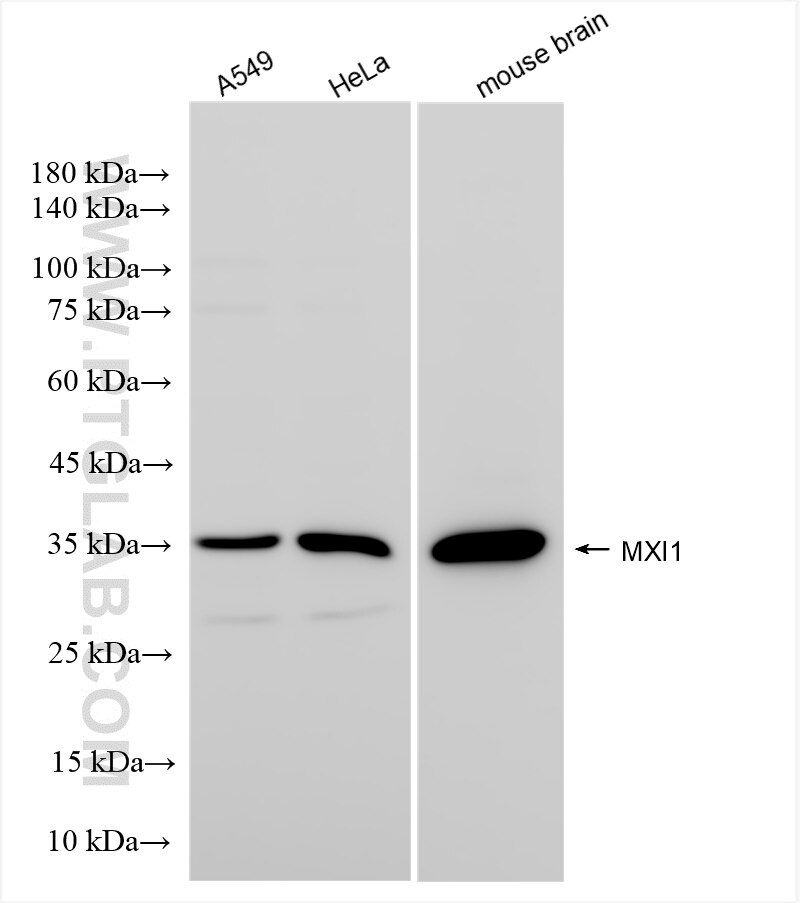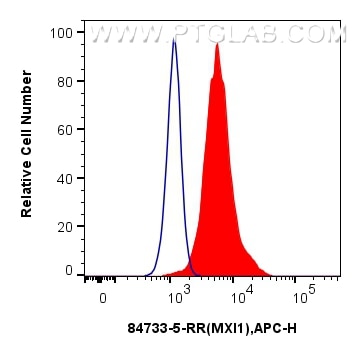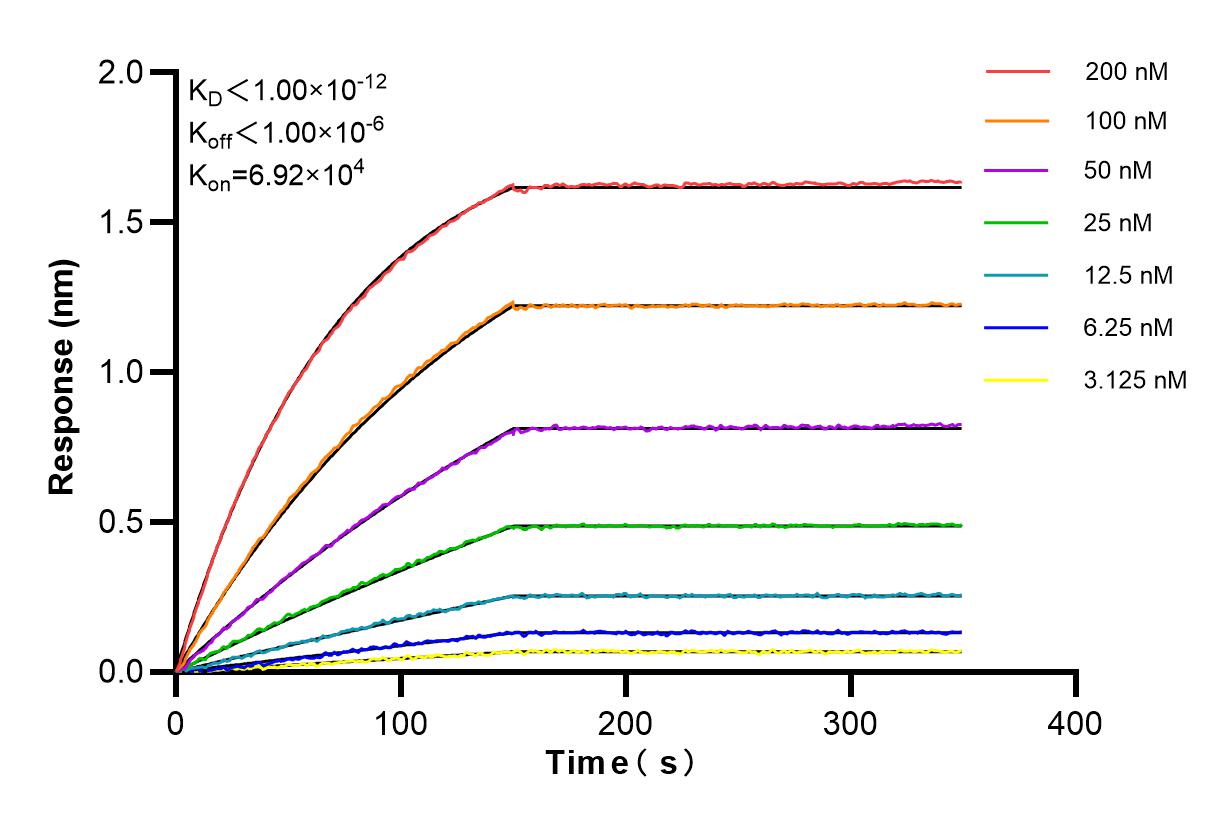Tested Applications
| Positive WB detected in | A549 cells, HeLa cells, mouse brain tissue |
| Positive FC (Intra) detected in | HeLa cells |
Recommended dilution
| Application | Dilution |
|---|---|
| Western Blot (WB) | WB : 1:1000-1:6000 |
| Flow Cytometry (FC) (INTRA) | FC (INTRA) : 0.25 ug per 10^6 cells in a 100 µl suspension |
| It is recommended that this reagent should be titrated in each testing system to obtain optimal results. | |
| Sample-dependent, Check data in validation data gallery. | |
Product Information
84733-5-RR targets MXI1 in WB, FC (Intra), ELISA applications and shows reactivity with human, mouse samples.
| Tested Reactivity | human, mouse |
| Host / Isotype | Rabbit / IgG |
| Class | Recombinant |
| Type | Antibody |
| Immunogen | MXI1 fusion protein Ag3024 Predict reactive species |
| Full Name | MAX interactor 1 |
| Calculated Molecular Weight | 228 aa, 26 kDa |
| Observed Molecular Weight | 36 kDa |
| GenBank Accession Number | BC012907 |
| Gene Symbol | MXI1 |
| Gene ID (NCBI) | 4601 |
| Conjugate | Unconjugated |
| Form | Liquid |
| Purification Method | Protein A purfication |
| UNIPROT ID | P50539 |
| Storage Buffer | PBS with 0.02% sodium azide and 50% glycerol , pH 7.3 |
| Storage Conditions | Store at -20°C. Stable for one year after shipment. Aliquoting is unnecessary for -20oC storage. 20ul sizes contain 0.1% BSA. |
Background Information
MXI1 is a transcription factor containing a basic helix-loop-helix leucine zipper (bHLHzip) and belongs to the Myc-Max-Mad transcriptional network. It is a transcriptional repressor thought to negatively regulate MYC function, and is therefore a potential tumor suppressor. This protein inhibits the transcriptional activity of MYC by competing for MAX, another basic helix-loop-helix protein that binds to MYC and is required for its function. Defects in this gene are frequently found in patients with prostate tumors.
Protocols
| Product Specific Protocols | |
|---|---|
| WB protocol for MXI1 antibody 84733-5-RR | Download protocol |
| Standard Protocols | |
|---|---|
| Click here to view our Standard Protocols |







